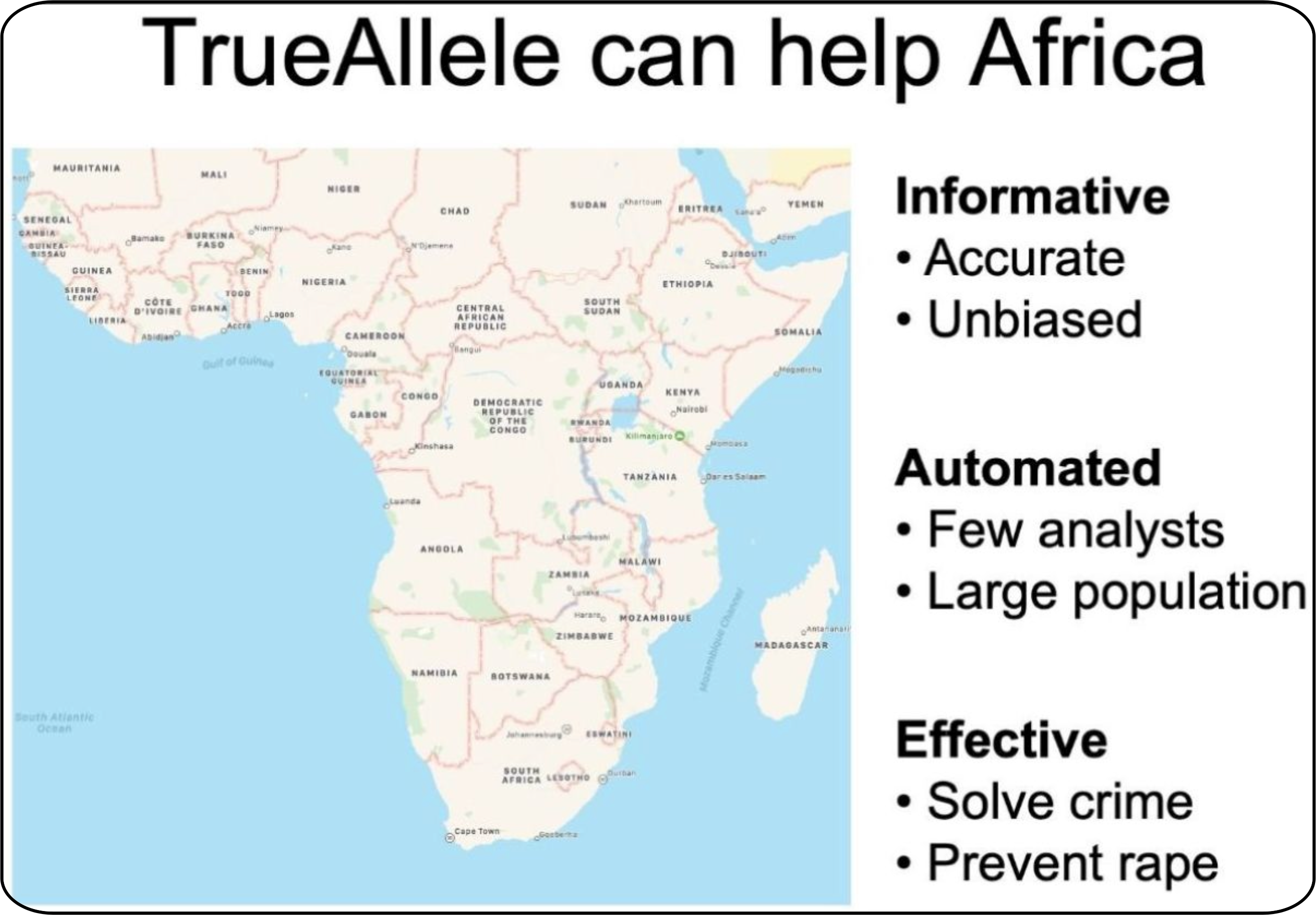Back to Newsroom
23-Sep-2024
Twenty-five years of forensic innovation
Twenty-five years ago, Cybergenetics revolutionized forensic DNA science. Crime laboratories were putting out highly informative evidence data, but couldn’t interpret much of what they saw. Mixtures of several people, small amounts of DNA, and other complex data were left unreported. So science left justice without forensic facts.
TrueAllele® technology changed all that. Using Bayesian probability modeling, a computer could explain complex DNA data, instead of discarding it. Cybergenetics and others validated the technology, establishing TrueAllele accuracy. Automated interpretation of DNA evidence freed analysts from the burden of tedious subjective data decisions.
In August, Cybergenetics Chief Scientist Dr. Mark Perlin lectured at the University of Cape Town (UCT). He discussed the ideas behind the TrueAllele revolution. The system is driven by data, and modeled by mathematics, to find the right scientific answer. Cybergenetics was the first to invent accurate probabilistic genotyping, the first to validate, and the first to bring this powerful science into a courtroom.

How does TrueAllele work? How is it tested? How do experts explain its results in court? What impact has the innovation had on criminal prosecution and defense, exonerating innocent people, and mass disasters? Why do limited data-discarding alternatives fail? Why do courts accept TrueAllele as reliable evidence?
The answers show why TrueAllele is the only real option for helping Africa. Its informative DNA results are accurate and unbiased. With true automation, just a few analysts can serve a large population. Effective DNA mixture technology can solve crime and help prevent rape. This fifty-minute UCT talk explains the TrueAllele solution.